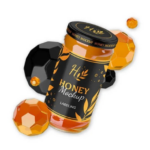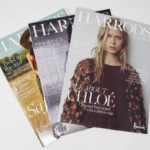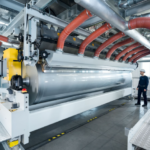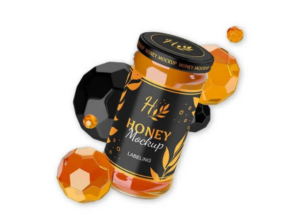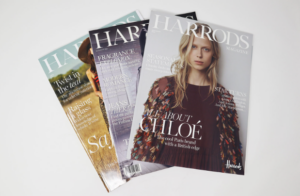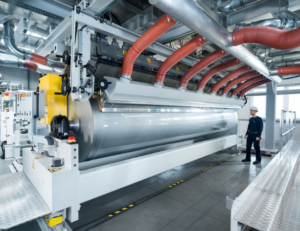Biaxially Oriented Polypropylene (BOPP) films are frontrunners in the food packaging space, thanks to their exceptional moisture barrier properties. Foods that are sensitive to moisture require an adequate barrier to retain their crispiness and maintain shelf life.
Even better, BOPP films are biodegradable and completely non-toxic, making them eco-friendly. The best part, these films are inexpensive and substantially reduce overall cost. In addition, BOPP films have made handling, containments, and shipping of foods effortless, from pouches to packages.
But there’s more to it. Companies and brands are actively digging ways to improve the aesthetic appeal of BOPP films so that the packaged product looks as good as it tastes. Since it’s the package and its aesthetics that directly hits the customer, a lot goes into the final outlook of BOPP films. Factors like ease of use, user-friendliness, brand identification, film quality, and print are crucial from the customer’s standpoint.
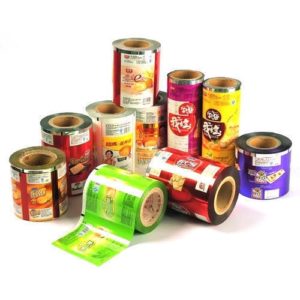
So even though the film has all it needs to sustain perishable products, it’s the final print that means the most. This is where BOPP printing comes in. Understanding how BOPP films are printed, the different technologies used to print these films can help better understand what method works best based on film properties, budget, design, and graphics.
Read on to find more about the printing processes for BOPP films.
Printing Processes for BOPP Films
BOPP film can be printed with one or more of the following processes. Each of these uses unique technology and serves a particular purpose.
Flexographic Printing
Flexographic printing uses flexography, a famous printing technology that uses a flexible printing plate. In fact, flexography is by far the most widely used print technology in the label industry. It has evolved through the years. Modern flexographic machines employ flexible photopolymer printing plates that are wrapped around cylinders onto a web press. Both water-based inks and UV inks can be used with these printing plates. These plates rotate at high speeds, transferring the ink through tiny holes to the film. Newer flexographic printing machines enliven texts, graphics, and images and print at a high line count.
Pros
- Flexographic printing is a high-speed process and is ideal for long printing runs
- It is suitable for a range of substrate materials
- The process requires minimum time to set-up
- It causes minimum waste during printing
- Multi-purpose system as it does printing, varnishing, laminating, and die-cutting in one go
- Modern flexographic printing methods are fully controlled and require less operator on board
- Produces high quality print
- The equipment requires minimum maintenance
- It requires inexpensive equipment
Cons
- Overall, the estimated price of flexographic printing plates is higher than other printing forms. However, with adequate maintenance, these plates can last for a very long time.
Rotogravure Printing
Rotogravure printing utilizes the traditional rotatory print technique to print on BOPP films. This method revolves around printing directly on a cylinder, plate, or any similar substance. The imprint is then transferred onto the final substrate, which in this case, is the BOPP film. Rotogravure printing is highly popular in large-scale commercial printing of BOPP-film pouches and containers.
Pros
- The production speed of rotogravure printing gives it an edge over other printing methods. Rotogravure printing has the ability to reach a very high speed.
- The print quality of images and graphics with this method is consistent.
- The print cylinders used in the rotogravure printing method can be repeated several times.
Cons
- The start-up cost of the rotogravure printing method is exceptionally high, and a very high print output is needed to make up for the initial investment.
- The preparation time of cylinders is time-consuming as it requires a specific skill set.
Digital Printing
Digital printing of BOPP films is based on the ink-jet print method. However, unlike other printing methods, the images and graphics in digital printing are directly transferred onto the BOPP film substrate. Due to this, digital printing can cater to a wide range of audiences and is also super fast. What’s more, digital printing does not require any cardboard inserts or labels.
Pros
- Suitable for printing dynamic content for a different group of audiences.
- It is a fast process.
- Digital printing requires lower inventory to get started.
- The technique minimizes waste production.
Cons
- The final print is not as durable as that achieved by flexographic and rotogravure printing.
- Pricing is fixed in digital printing, and bulk printing does not help reduce overall cost.
- It is not suitable for producing white colored prints.
Nanoimprint Lithography
Conventionally, lithography has been used for label printing. The process relies on the oil-based printing method, and the labels printed with lithography are then used for pasting on flexible films. Recent technological advancements in the lithography printing method have given rise to large area roll to roll nanoimprint lithography.
In this method, BOPP films are imprinted with high-quality holographic images when used at a definite temperature. Ideally, an optimum embossing temperature of around 110C, an embossing force of 6 kg/cm2, and a film speed of 32m/min have produced quality images. The method is still being considered for use on large-scale BOPP film printing.
Pros
- Produces high-quality holographic images
Cons
- It requires strict control of embossing temperature to avoid the thermal shrinkage of BOPP films.
Conclusion
Biaxially Oriented Polypropylene Films are the most common packaging films out there. They are used for packaging a host of different food and non-food products. As more and more brands are focusing on improving the visual outlook of products, the demand for high-quality prints on flexible films has also risen. Methods like flexographic and rotogravure printing have long been used to print on BOPP films, and flexography still remains the most widely used method. Finally, Digital printing and Nanoimprint lithography are relatively newer approaches that have not made their way into commercial scale printing.

